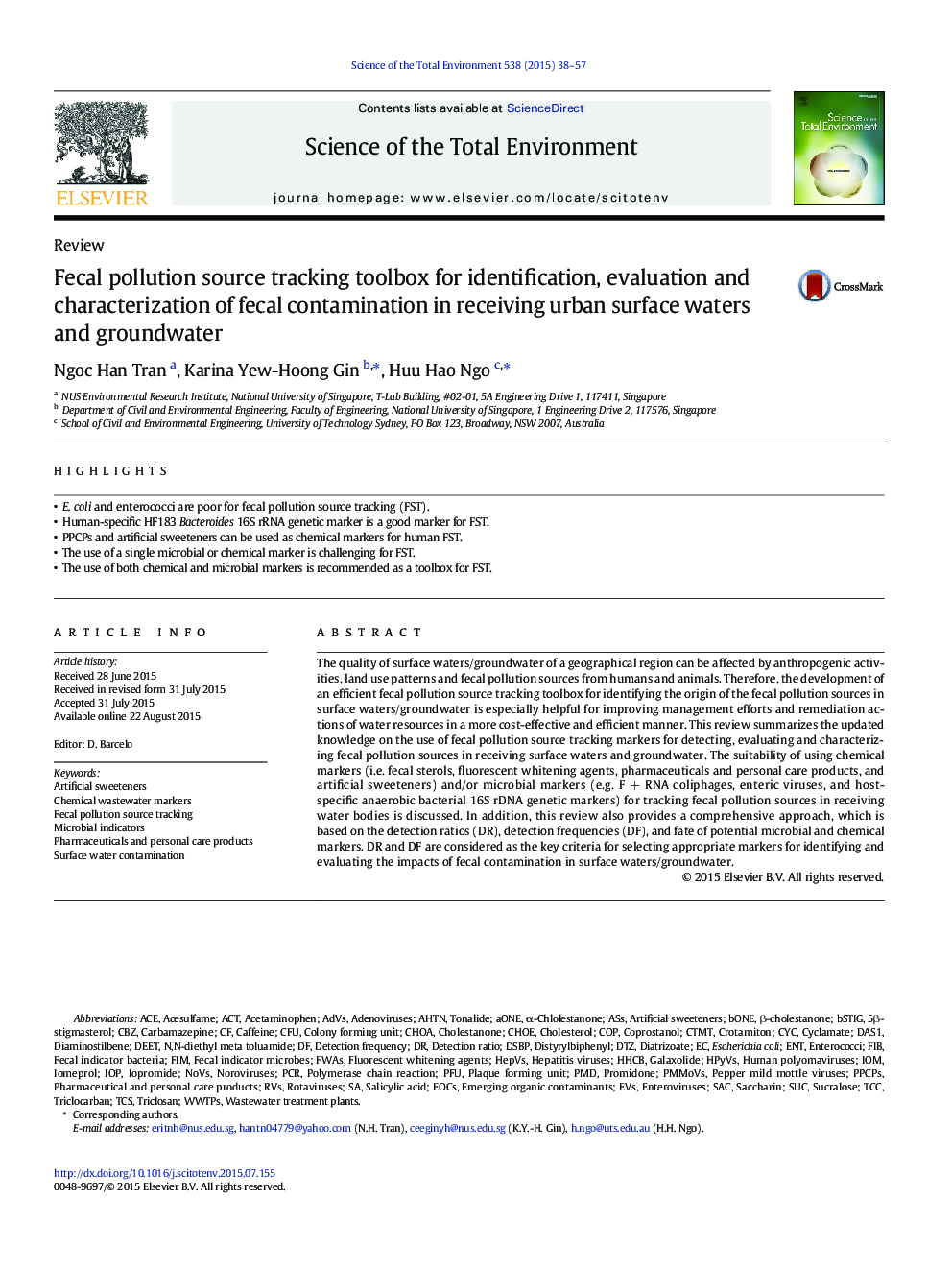| کد مقاله | کد نشریه | سال انتشار | مقاله انگلیسی | نسخه تمام متن |
|---|---|---|---|---|
| 6325132 | 1619746 | 2015 | 20 صفحه PDF | دانلود رایگان |

- E. coli and enterococci are poor for fecal pollution source tracking (FST).
- Human-specific HF183 Bacteroides 16S rRNA genetic marker is a good marker for FST.
- PPCPs and artificial sweeteners can be used as chemical markers for human FST.
- The use of a single microbial or chemical marker is challenging for FST.
- The use of both chemical and microbial markers is recommended as a toolbox for FST.
The quality of surface waters/groundwater of a geographical region can be affected by anthropogenic activities, land use patterns and fecal pollution sources from humans and animals. Therefore, the development of an efficient fecal pollution source tracking toolbox for identifying the origin of the fecal pollution sources in surface waters/groundwater is especially helpful for improving management efforts and remediation actions of water resources in a more cost-effective and efficient manner. This review summarizes the updated knowledge on the use of fecal pollution source tracking markers for detecting, evaluating and characterizing fecal pollution sources in receiving surface waters and groundwater. The suitability of using chemical markers (i.e. fecal sterols, fluorescent whitening agents, pharmaceuticals and personal care products, and artificial sweeteners) and/or microbial markers (e.g. FÂ +Â RNA coliphages, enteric viruses, and host-specific anaerobic bacterial 16S rDNA genetic markers) for tracking fecal pollution sources in receiving water bodies is discussed. In addition, this review also provides a comprehensive approach, which is based on the detection ratios (DR), detection frequencies (DF), and fate of potential microbial and chemical markers. DR and DF are considered as the key criteria for selecting appropriate markers for identifying and evaluating the impacts of fecal contamination in surface waters/groundwater.
Journal: Science of The Total Environment - Volume 538, 15 December 2015, Pages 38-57